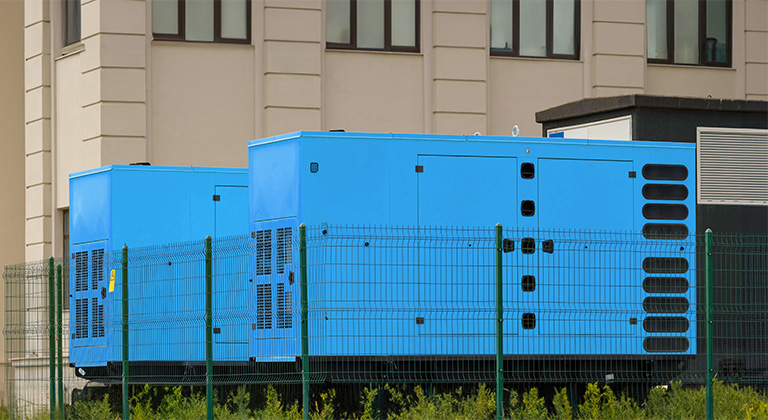67% of executives fear their business won’t survive the next severe weather event
Business leaders cite supply chain outages that left their business, customers, or vendor systems unable to operate
By: Brett Hoopingarner, Director of Underwriting, Sentry Insurance
September 18, 2025 – Severe weather is increasing in both frequency and severity, driving up repair costs, and causing ripples throughout the supply chain—fueled by inflation, demand surge, and even tariffs. If your business, infrastructure, or vendors suffer from the impact of severe weather, interruptions could go from days or weeks to many months. That can result in unrepaired property, unfilled orders, and even unpaid employees.
Sentry’s 2025 C-Suite Stress Index, which was published in February and based on a survey of 1,000 business leaders, confirms that weather is having both a direct and secondary impact on businesses:
90% said their business has been impacted by severe weather in the past five years
67% fear the next severe weather event could put their company out of business
64% say their business couldn’t survive 60 days without generating income
63% of leaders cited outages that left company, customer, or vendor systems unable to operate
39% experienced supply chain disruptions that created delays
How severe weather impacts business operations
Over the past five years, executives report severe weather has disrupted nearly every part of their operations—from power outages that halted production, to supply chain delays, damage to equipment and facilities, and vendor interruptions that created ripple effects across their network.

Severe weather impacts by region
Businesses across the U.S. are also increasingly vulnerable to severe weather events, regardless of geographical location. Executives across every region worry the next severe weather event could threaten the future of their company, including:
70% in the West
70% in the Northeast
67% in the Midwest
62% in the South
While weather patterns may vary by region, business leaders agree: severe weather is a nationwide risk, and it’s something companies must prepare for.
Six strategies to help reduce severe weather risk at your business
The good news is there are actions you can take to protect your business in case of severe weather, and responses to our survey provide some clues to help you get started.
1. Business income insurance
Business income insurance covers lost profit and ongoing expenses if an extreme weather event halts your operations. Business income coverage can also help you keep your employees paid by assisting with ongoing expenses like payroll. It’s like disability insurance for your business. This kind of protection is critical—about two-thirds of executives (64%) say their business couldn’t survive 60 days without generating income.
Not that long ago, an agent might’ve recommended six months of business interruption insurance as an initial rule of thumb. Today, 76% of executives aren’t completely confident their insurance would cover six months of payroll following a weather event that significantly limits their revenue.
Because of supply chain constraints, demand surges, contractor timeliness, and the downstream effects of tariffs, an agent’s recommendation may now span from 12 to 24 months to account for supplies like steel, lumber, electrical components, and more.
2. Business personal property coverage
Business personal property coverage helps cover office contents like furniture, computers, phones, and mechanical equipment. Think of it this way—if you turned your business upside down and shook it, everything that falls out could be considered business personal property. With 34% of leaders citing damage to equipment, and 32% indicating damage to facilities, it’s important to have coverage that helps protect the assets contained inside your business.
3. Contingent business interruption coverage
Contingent business interruption coverage helps if severe weather disrupts a key supplier or partner—which impacts your ability to operate. In fact, 63% of leaders share that outages have left company, customer, or vendor systems unable to operate.
4. Utility service interruption coverage
Utility service interruption coverage protects against income loss and added costs when power, water, or sewer services are knocked out. It’s a risk that’s all too common, with 45% of businesses reporting outages that have left their company unable to operate.
When Hurricane Helene hit North Carolina, roads were washed out, causing damage to water and power infrastructure. Businesses on the coast and much further inland couldn't manufacture products, transport goods, or move materials out of the region. Many closed for a prolonged period of time due to utility interruptions.
5. Update property valuations
Update property valuations: Don’t wait until renewal. If the conversation around tariffs means you’ve stockpiled materials or if the cost (and therefore value) of what’s in your building has increased, you may be underinsured if you need to replace it due to damages. In other words, the value of your property—including parts, supplies and materials—could now be higher, due to inflation and tariffs, than you’ve accounted for in your insurance policy.
6. Refresh your business continuity plan
Refresh your business continuity plan: Severe weather is coming to a neighborhood—and business—near you. Ensure your business continuity plan accounts for today’s risks and that you’ve covered all contingencies. That can mean having conversations with local first responders, utilities, and even forging partnerships with similar businesses in your area. You might be competitors, but in today’s landscape, we regularly see how much businesses all rely on each other for support when the worst happens.
The findings from Sentry’s 2025 C-Suite Stress Index show that leaders across every region are experiencing the financial and operational strain of extreme weather—and the takeaway is clear. Preparation is essential to protection. By reviewing coverages, updating valuations, and refreshing continuity plans, your business can take steps to mitigate financial risks associated with weather events.
2025 C-Suite Stress Index
Discover how 1,000 executives say severe weather is impacting their businesses and decisions.

About Brett
Brett Hoopingarner is the Director of Underwriting for Sentry Insurance. In his role, Brett helps more than 12,000 small businesses prepare for and protect against emerging risks.




